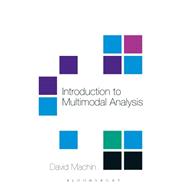
| Acknowledgements | p. v |
| Introduction | p. vii |
| Visual grammar and the meaning of metaphorical associations | p. 1 |
| From lexis to grammar | p. 2 |
| Metaphorical association | p. 6 |
| Discourse | p. 11 |
| Multimodality as a broader change in the way we communicate in society | p. 16 |
| Iconography: the 'hidden meanings' of images | p. 21 |
| A semiotic approach: denotation and connotation | p. 23 |
| Carriers of connotation | p. 27 |
| Iconographic symbolism | p. 39 |
| Modality: concealing and exaggeration in images | p. 45 |
| The origins of modality as a linguistic concept | p. 46 |
| Modality markers | p. 48 |
| Kinds of visual modality | p. 57 |
| The meaning of colour in visual design | p. 63 |
| Patterns in colour as a semiotic resource | p. 64 |
| The essential requirements of a semiotic mode | p. 65 |
| Communicative functions of colour | p. 65 |
| The value of colours | p. 67 |
| Semiotics of colour | p. 69 |
| The dimensions of colour | p. 69 |
| Colour harmony | p. 81 |
| The meaning of typography | p. 83 |
| Typeface and design | p. 86 |
| Typography as a semiotic system | p. 89 |
| Inventory of typographic meaning potential | p. 93 |
| Line spacing and alignment | p. 105 |
| Representation of social actors in the image | p. 109 |
| Positioning the viewer in relation to people inside the image | p. 110 |
| The gaze | p. 110 |
| Angle of interaction | p. 113 |
| Kinds of participants | p. 118 |
| Agency and action | p. 123 |
| Carriers of meaning | p. 127 |
| Composition and page layout | p. 129 |
| Salience | p. 130 |
| Some basic principles of salience | p. 132 |
| Four kinds of composition | p. 138 |
| Given and new/left and right | p. 139 |
| The given and new in visual compositions | p. 141 |
| Top and bottom/ideal, real | p. 145 |
| Triptych and centre/margin compositions | p. 147 |
| Embedded structures | p. 149 |
| Framing | p. 150 |
| Compositional structures combined | p. 157 |
| Is there a visual grammar? Some differences between language and pictures | p. 159 |
| What would we need to find in images to say there is a visual grammar? | p. 161 |
| Components of visual grammar in Reading Images | p. 163 |
| Vectors | p. 163 |
| Are vectors visual grammar? | p. 166 |
| Modality | p. 177 |
| Do people use modality scales to judge the truth of images and are they grammar? | p. 179 |
| Is there a visual grammar? | p. 185 |
| Visual literacy | p. 187 |
| Bibliography | p. 189 |
| Index | p. 197 |
| Table of Contents provided by Ingram. All Rights Reserved. |
The New copy of this book will include any supplemental materials advertised. Please check the title of the book to determine if it should include any access cards, study guides, lab manuals, CDs, etc.
The Used, Rental and eBook copies of this book are not guaranteed to include any supplemental materials. Typically, only the book itself is included. This is true even if the title states it includes any access cards, study guides, lab manuals, CDs, etc.